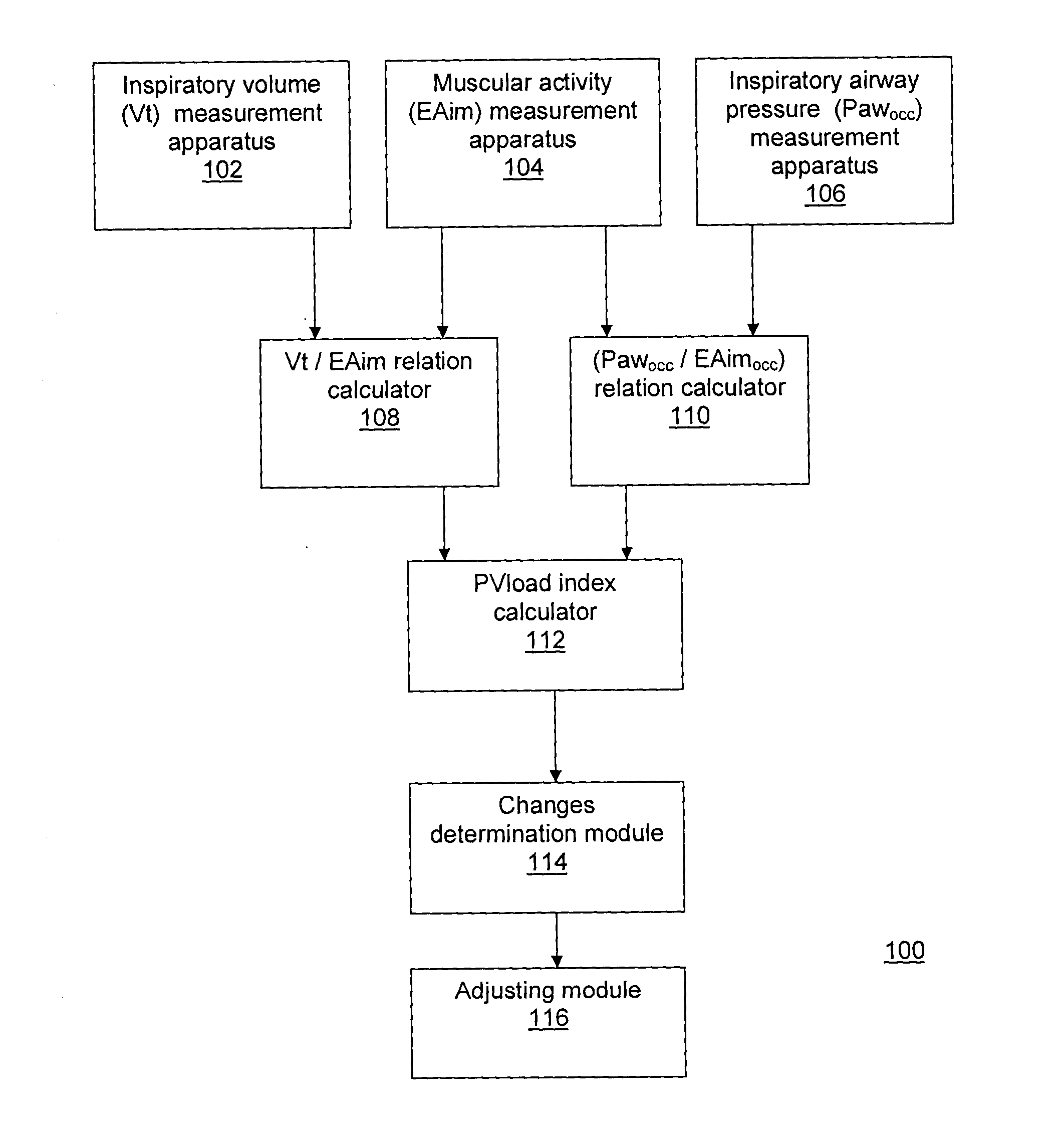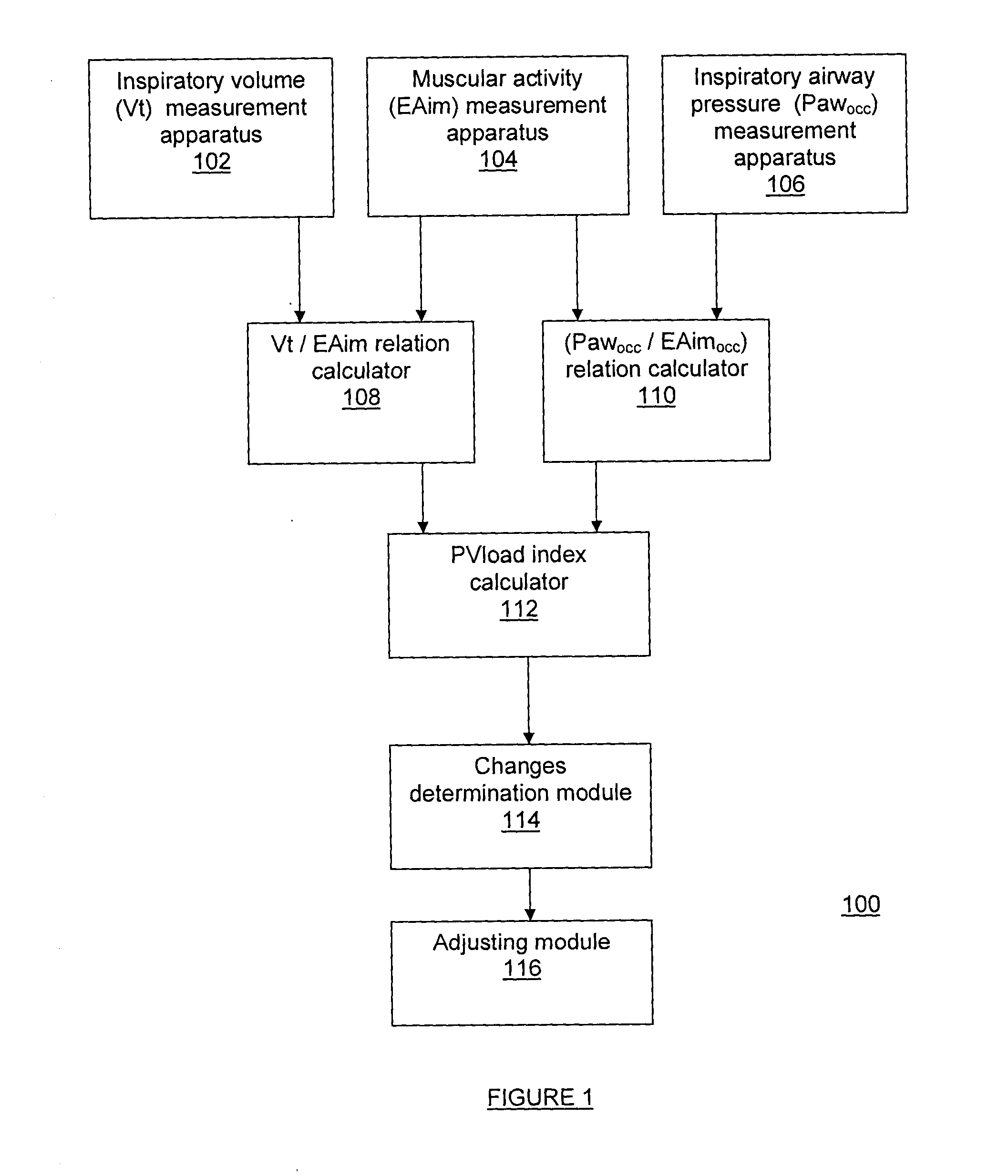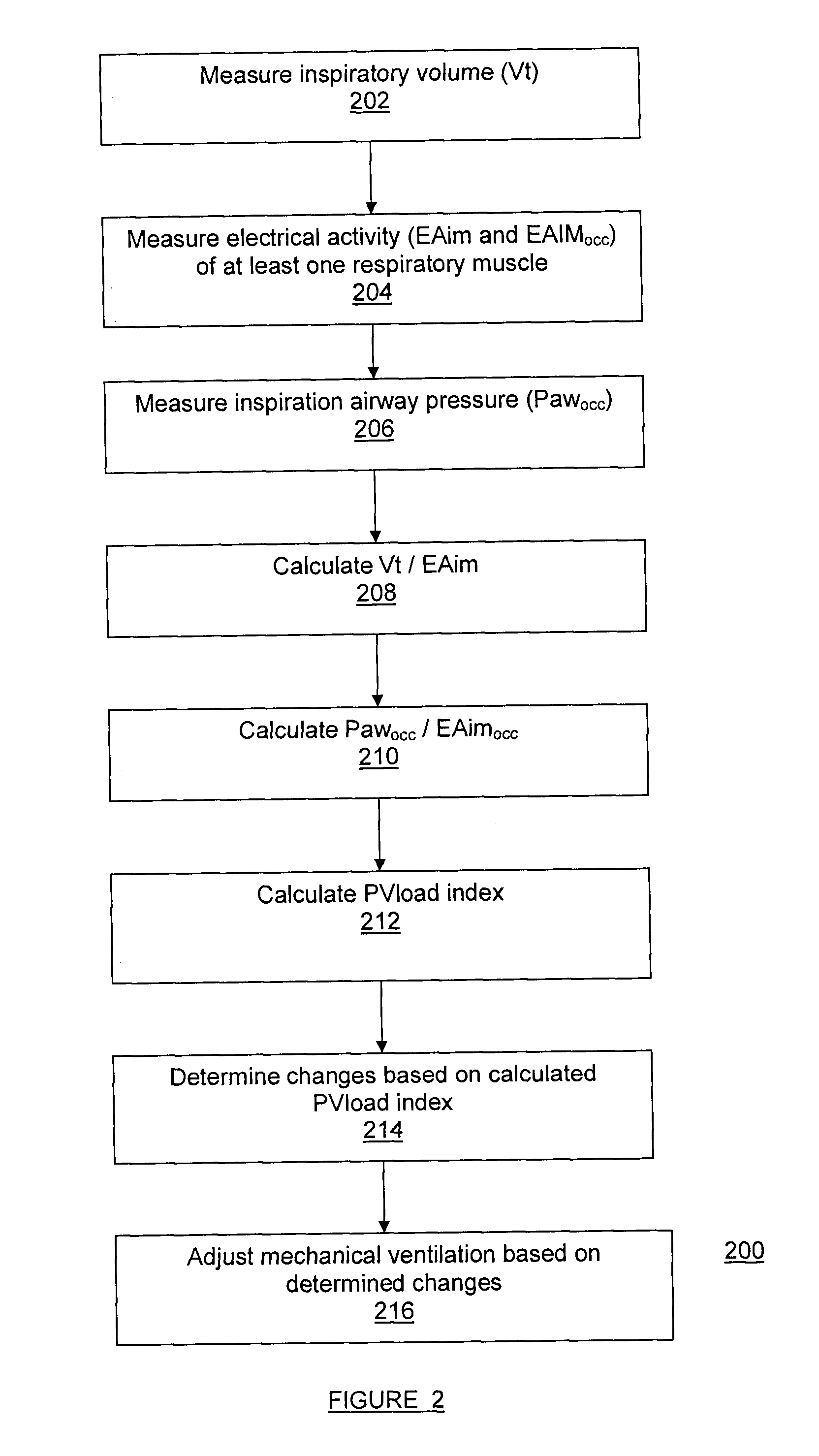Method and system for measuring changes in inspiratory load
a technology of inspiratory load and measurement method, which is applied in the field of mechanical ventilation, can solve the problems of difficult to determine the load imposed on the current method of determining the load of the patient's respiratory system,
- Summary
- Abstract
- Description
- Claims
- Application Information
AI Technical Summary
Problems solved by technology
Method used
Image
Examples
Embodiment Construction
The present method and system measure changes in inspiratory load imposed on a patient's respiratory system. For doing so, the present method and system determine a dynamic load imposed on the patient's respiratory system. The method and system may be applied to any mode of artificial respiration.
More particularly, the present method and system evaluate a neural inspiratory effort of a patient's respiratory system and determine a dynamic load imposed on the patient's respiratory system. By evaluating a neural inspiratory effort, i.e. by taking into consideration the ability of the patient's inspiratory muscles to generate pleural pressure Ppl in response to a neural activation to expand the lungs, it is possible to adjust the ventilatory assist as a function of the dynamic load of the patient's respiratory system.
Reference is now made to FIG. 1, which is a schematic representation of an aspect of the present system 100 for measuring changes in inspiratory load during mechanical vent...
PUM
 Login to View More
Login to View More Abstract
Description
Claims
Application Information
 Login to View More
Login to View More - R&D
- Intellectual Property
- Life Sciences
- Materials
- Tech Scout
- Unparalleled Data Quality
- Higher Quality Content
- 60% Fewer Hallucinations
Browse by: Latest US Patents, China's latest patents, Technical Efficacy Thesaurus, Application Domain, Technology Topic, Popular Technical Reports.
© 2025 PatSnap. All rights reserved.Legal|Privacy policy|Modern Slavery Act Transparency Statement|Sitemap|About US| Contact US: help@patsnap.com



